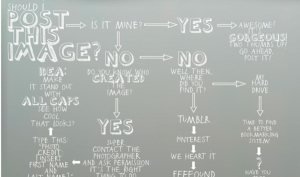
Although the guidelines for using copyrighted music in the classroom (and literally, I mean “in the classroom”) make it relatively easy and permissable to use most kinds of music, there is often a need to ‘publish’ your video or other media work with royalty-free music. Examples may be: music to integrate with your school news programs, DVD’s to distribute or sell, or publishing videos or podcasts to websites that don’t police copyrighted material, etc. (like YouTube does)
There are a number of “free” music libraries students and educators can use, but its worth reading the fine print (at least some of it). The terms of use or TOU are ridiculously boring or, at the very least, pesky to read (you know, the fine print that comes with each new version of software you load such as the latest iTunes version)…but it is vitally important you know its essence before you proceed.
Purple Planet Royalty Free Music; Free to use, even for commercial use but they require a link- easy enough.
Freeplay Music Vastly better library but has a lot more “TOU” info to wade through. Does not require a contract in strictly educational settings and/or for personal use.
-HS
 Many people are realizing their posts are not getting the reach they expected. Could Facebook’s model for monetizing user content be the problem? And is Facebook reaching its saturation point with its current 1.1 billion user base? Here’s why it could. http://youtu.be/l9ZqXlHl65g
Many people are realizing their posts are not getting the reach they expected. Could Facebook’s model for monetizing user content be the problem? And is Facebook reaching its saturation point with its current 1.1 billion user base? Here’s why it could. http://youtu.be/l9ZqXlHl65g


 In the latest salvo of copyright holders trying to squeeze dollars from media creators to use the most popular song in the English language, Warner/Chappell Music Inc wants to collect 5$ million from a small production company. Its complicated but fascinating.
In the latest salvo of copyright holders trying to squeeze dollars from media creators to use the most popular song in the English language, Warner/Chappell Music Inc wants to collect 5$ million from a small production company. Its complicated but fascinating. For those with an on-the-go spirit and small fingers, you too can edit video on your phone. Here at Channel 10, we like our big-lensed camcorders to catch all the action-and not to mention the weighted feel of a study camera on our shoulder to provide stability and minimal shakiness.
For those with an on-the-go spirit and small fingers, you too can edit video on your phone. Here at Channel 10, we like our big-lensed camcorders to catch all the action-and not to mention the weighted feel of a study camera on our shoulder to provide stability and minimal shakiness.